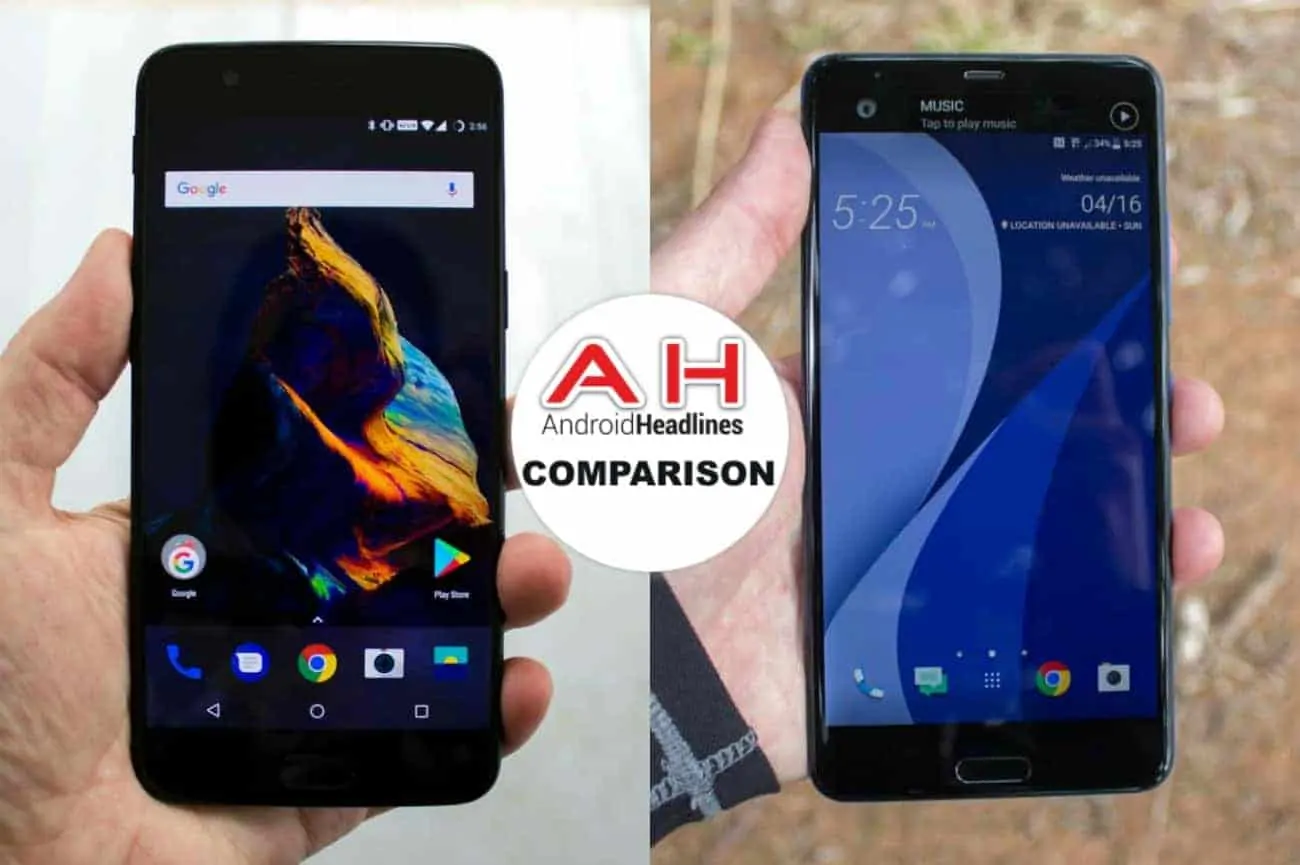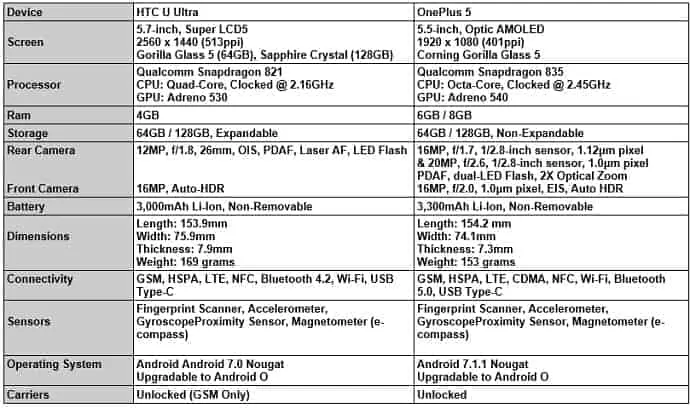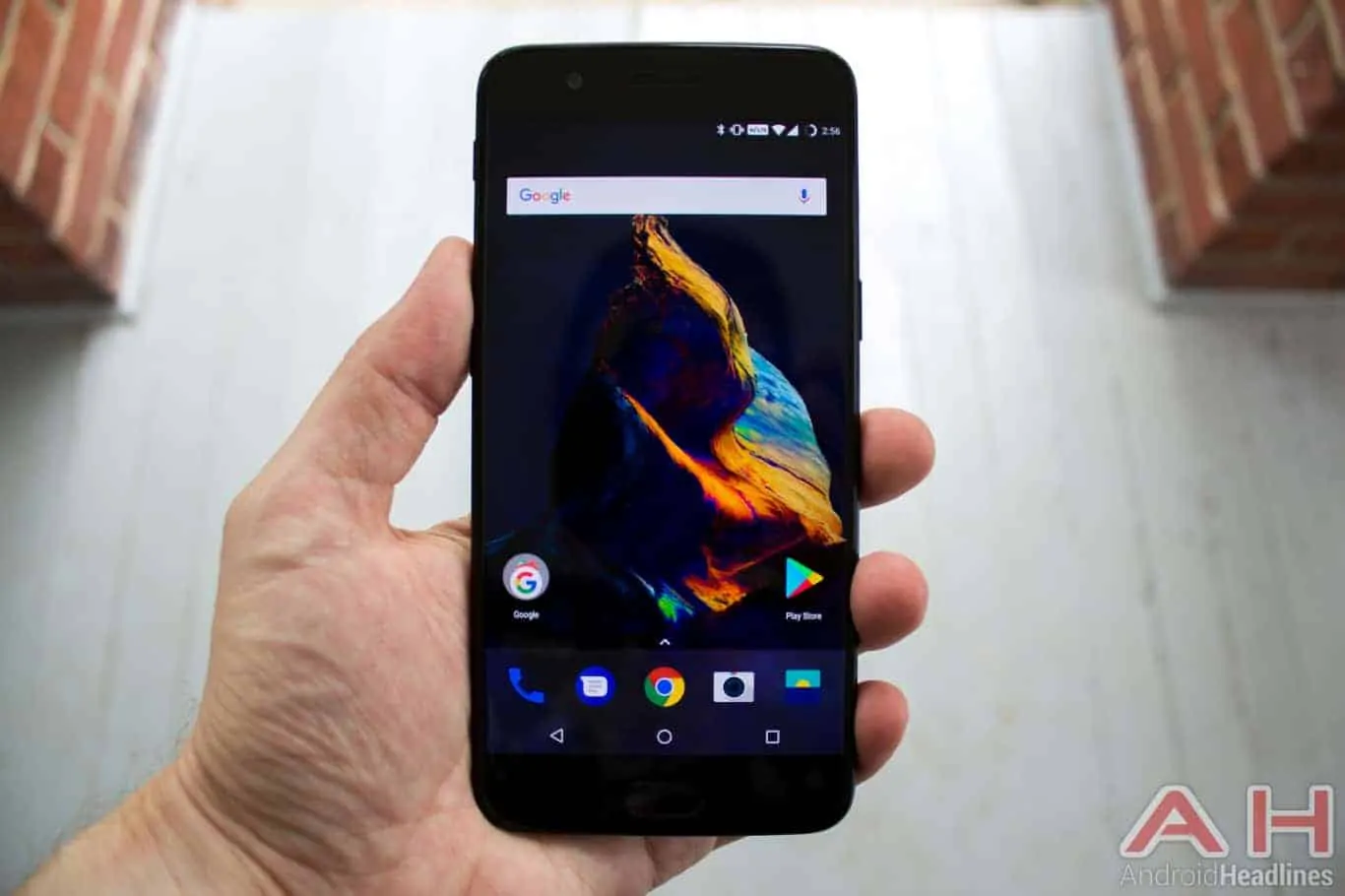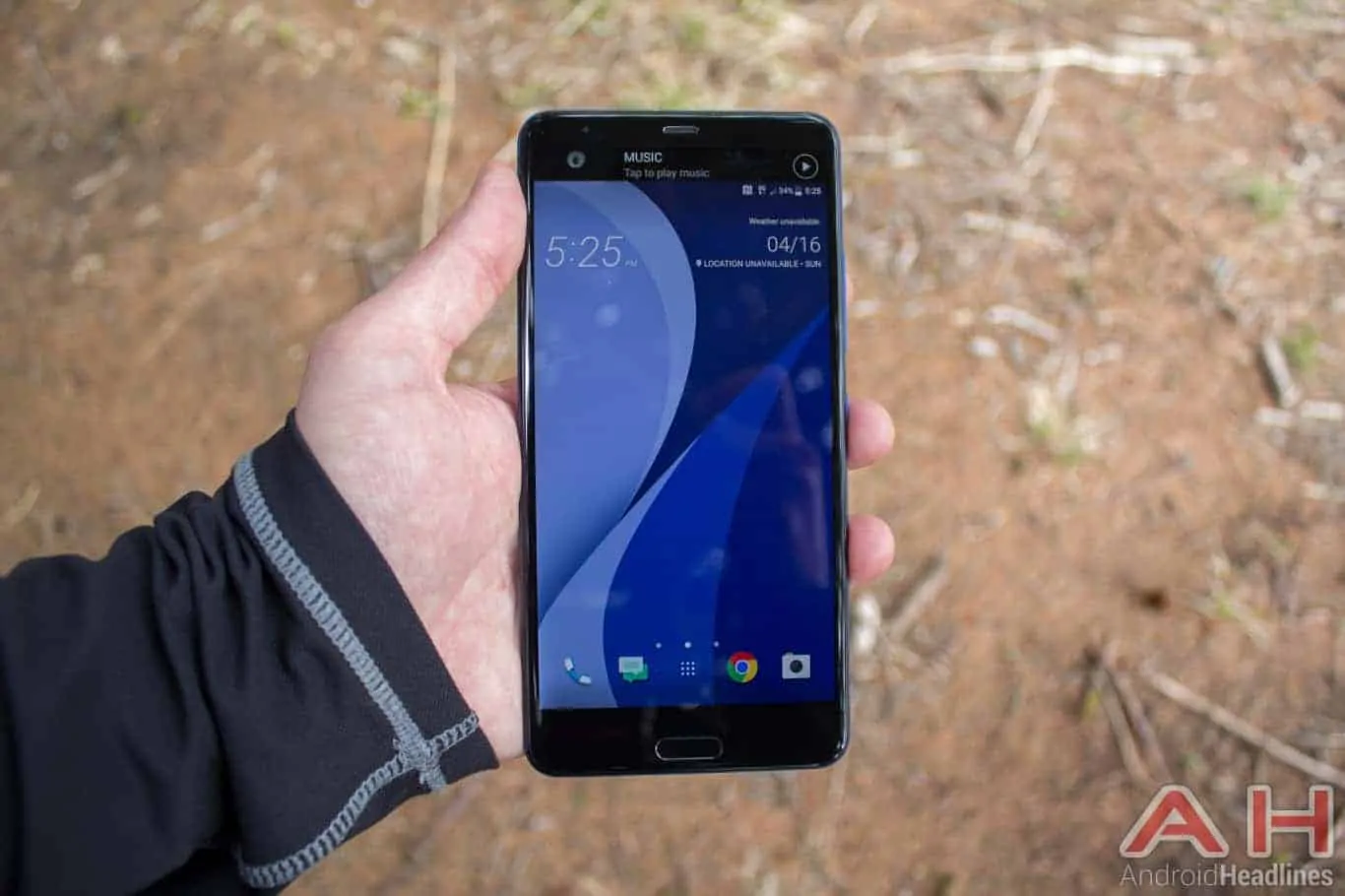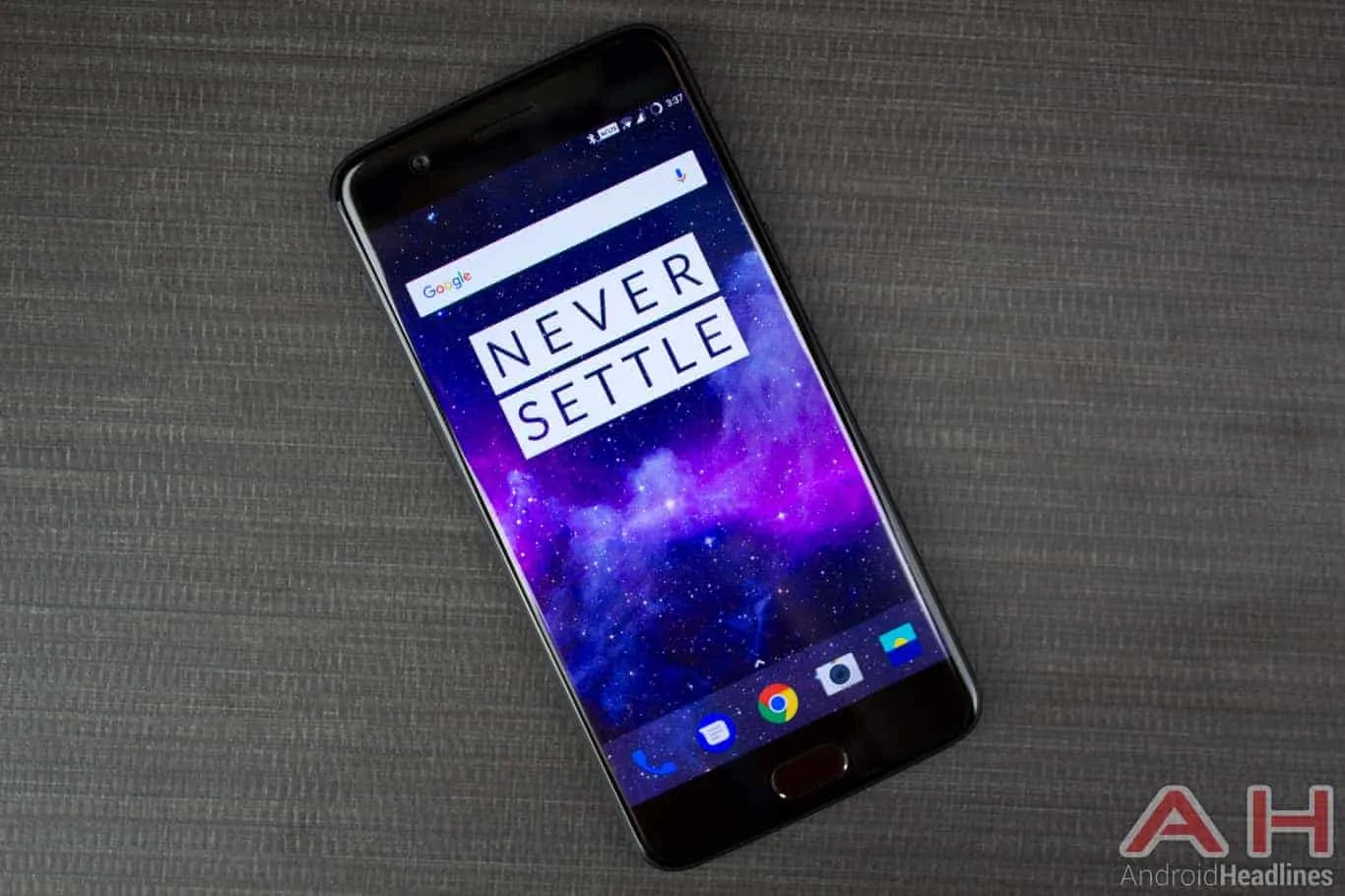Introduction
It’s been about a month since the OnePlus 5 went on sale, and it’s already become an incredibly popular smartphone around the world. It is one of the most remarkable devices you can buy right now, with its premium hardware and a pocket-friendly price-tag making it a compelling buy, notwithstanding all those talks about its obvious similarities with the iPhone 7 Plus. On the other hand, you have a few of HTC’s recent offerings like the HTC U Ultra and the HTC U11 that also offer premium hardware, and although they haven’t exactly set the sales charts on fire, are still decent devices in their own right. That being the case, today we’ll take a look at the HTC U Ultra and see if it can compete with the OnePlus 5, which is admittedly, going into today’s contest as an overwhelming favorite. Can the HTC cause an upset? Let’s find out!
Specifications
OnePlus 5
The OnePlus 5 comes with top-shelf hardware that includes one of the fastest, most desirable smartphone processors under its hood. It is also one of the first smartphones alongside the ASUS ZenFone AR and the Nubia Z17 to offer an 8GB RAM variant. While the device has been criticized for following the design language of the Apple iPhone 7 Plus a bit too closely, there’s no denying the appeal of a full-fledged flagship smartphone with the price of a premium mid-ranger.
The OnePlus 5 features a 5.5-inch 1080p Optic AMOLED screen that’s protected by Corning Gorilla Glass 5. As alluded to earlier, it is powered by the Qualcomm Snapdragon 835 SoC that comes with a 64-bit CPU with eight custom Kryo 280 cores, four of which are clocked at 2.45GHz and four others at 1.9GHz. An Adreno 540 GPU takes care of all the graphics processing needs. The OnePlus 5 is offered in two different variants – a base version with 6GB of RAM and 64GB of internal storage, and a more premium model that costs $60 extra, but offers a whopping with 8GB of RAM and 128GB of built-in storage.
As far as photography is concerned, the OnePlus 5 sports a rear-facing dual-camera module with gyro-based EIS and a dual-LED flash. While one of the cameras incorporates a 16-megapixel Sony sensor with an f/1.7 lens, the other one comes with a 20-megapixel sensor that’s paired with an f/2.6 telephoto lens. The front-facing camera on the OnePlus 5 also comes with a 16-megapixel sensor, but with 1.0μm pixels and a lens that has an f/2.0 aperture. As far as videos are concerned, while the front-facing camera can shoot 1080p videos at 30fps, the rear-facing module can actually shoot 4K videos at 30fps and full HD videos at up to 120fps. On the software side of things, the device comes with Android 7.1.1 Nougat pre-installed in the form of Oxygen OS.
The OnePlus 5 also comes with a long list of connectivity features that include Wi-Fi 802.11 a/b/g/n/ac, Wi-Fi Direct, DLNA and Bluetooth 5.0, while cellular connectivity includes support for as many as 34 frequency bands. The device also supports GPS with A-GPS and GLONASS, and there’s also an NFC chip that should make it compatible with most mobile payment systems including Android Pay. Unlike many of its competitors this year, the OnePlus 5 still ships with the 3.5mm audio port, although, there’s also a USB Type-C port for charging and data syncing. The device carries a 3,300mAh battery, weighs 153 grams and, measures 152.2mm in length, 74.1mm in width and 7.3mm in thickness.
HTC U Ultra
The HTC U Ultra is a large-screen phablet that the Taiwanese giant announced in January, and its biggest claim to fame is that, like LG’s V-series devices, it also ships with an additional ticker display up top. While the primary display is a 5.7-inch Super LCD5 capacitive touchscreen with a resolution of 2560 x 1440 pixels, the secondary screen measures 2.05-inches diagonally, and has a resolution of 1040 x 160 pixels. Like the secondary display on the LG V20, this one also displays notifications and allows quick access to most used apps. The screen protection depends on the variant, so while the 64GB model is protected by Corning’s Gorilla Glass 5, the 128GB version is protected by Sapphire crystal glass.
Both versions are powered by the Qualcomm Snapdragon 821 SoC that comes with an integrated quad-core CPU and Adreno 530 GPU. While two of the four CPU cores are clocked at 2.16GHz, the other two are clocked nominally lower at 2.15GHz. Both versions of the device come with 4GB of RAM and have expandable storage via a hybrid microSD slot that also doubles up as a second SIM slot when needed. The HTC U Ultra also carries a non-removable 3,000mAh Li-ion battery with support for Qualcomm’s Quick Charge 3.0 standard.
Imaging resources on the HTC U Ultra include a single 12-megapixel rear-facing camera that comes with an f/1.8 aperture, 26mm focal length, optical image stabilization (OIS), laser autofocus, PDAF and a dual-tone LED flash. The camera also has a 1/2.3-inch’ sensor size and 1.55µm pixel size, while software features include geo-tagging, touch focus, face detection, auto-HDR and panorama. It can shoot 4K videos at 30fps and 720p videos at 120fps. The front-facing selfie-cam on the HTC U Ultra offers a 16-megapixel sensor that can record 1080p videos at 30fps, which is pretty much standard for most smartphones even at the lower mid-range these days.
The HTC U Ultra also comes with a whole host of sensors including a front-mounted fingerprint scanner that’s integrated into the physical Home button, just like the OnePlus 5. The device also has an accelerometer, a gyroscope, a proximity sensor, an ambient light sensor and a magnetometer (e-compass). The handset supports 4G LTE, 3G HSPA and 2G GSM cellular signals, while local wireless connectivity options include dual-band Wi-Fi 802.11 a/b/g/n/ac, Wi-Fi Direct, DLNA and Bluetooth 4.2. The HTC U Ultra also includes USB Type-C connectivity, but unlike its rival in today’s comparison, gives the 3.5mm audio port a miss. The device comes with Android 7.0 Nougat pre-installed, and measures 162.4mm in length, 79.8mm in width and 8mm in thickness while weighing in at 170 grams.
And the Winner is …
The Final Word
Let’s be very clear at the outset. The OnePlus 5 wins this one and it wasn’t one of those close ones that was decided by the smallest of margins. The HTC U Ultra is a decent smartphone when taken in isolation, but finds it difficult to match up to the OnePlus 5 on a number of different aspects. There’s nothing really exceptionally wrong with U Ultra; in fact, far from it, but the overall implementation of some of the ideas (like the secondary display) just leaves too much to be desired. The year-old processor, less RAM and storage in the base version, the exclusion of the 3.5mm port, none of which would have been a deal-breaker in isolation, all adds up to make it less desirable than the OnePlus 5. But the real problem with the U Ultra lies not so much with the hardware as it does with the hefty price-tag it comes with. While the base version of the OnePlus 5 can be yours for just $479 in the U.S., the 6GB+64GB model of the U Ultra still costs around $560 seven months after its launch. That being the case, the OnePlus 5 just offers much better value not only with its faster hardware, but also all the third-party custom software developments that’s become a feature of the OnePlus lineup.
Buy The OnePlus 5 Buy The HTC U Ultra

